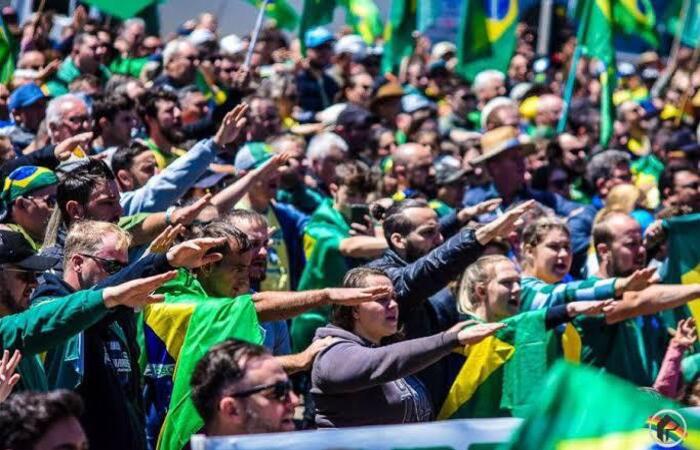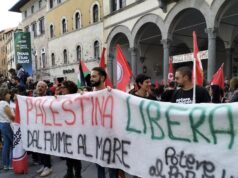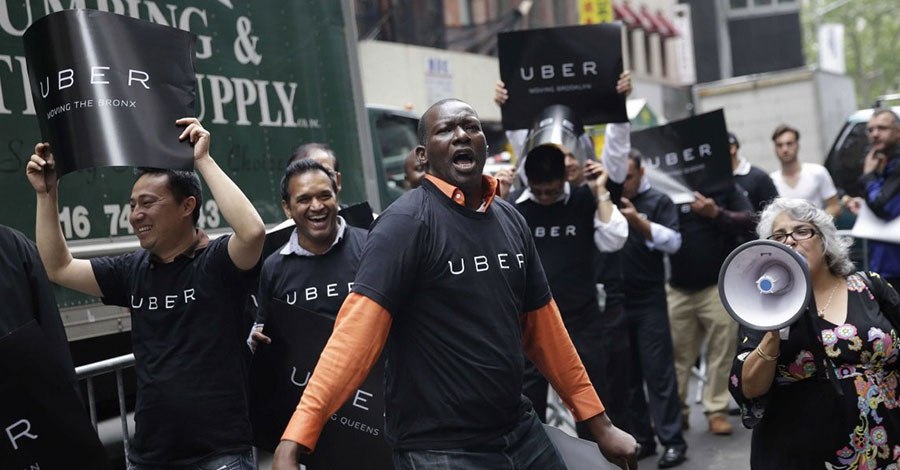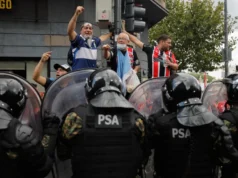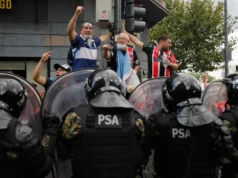By Passa Palavra
The ecstasy of the first hours confirmed what was already expected: the defeat of Bolsonaro and the victory of Lula in the 2022 elections, anticipated by practically all polls since Lula returned to the electoral board. What could not be anticipated, at least not before the voting on October 2nd, is that this victory would only be formal, merely numerical, with Lula ahead of Bolsonaro by a mere 2.1 million votes, or 1.8% of the valid votes.
Instead of contesting the election result and immediately claiming the occurrence of fraud, as he had been demonstrating that he would, Bolsonaro initially kept silent. The fact is that, with the great success of Bolsonarism in the October 2nd vote, two paths have opened for Bolsonaro: a) the usual politics in parliament, where he has the largest number of seats, and b) street radicalism. It is in this bifurcation that Bolsonaro’s silence is understood, letting each of these paths assert themselves before the other, in a kind of natural selection.
*
The analysis of the results of the voting on Sunday, October 30, confirms that Bolsonarism – even without Bolsonaro in the presidency, and even if he opts for the institutional, conservative path – enjoys much broader popular support than imagined.
Lula won in 3,123 municipalities in the second round; there were 3,376 municipalities in the first round. That is, Lula “lost” 253 municipalities, 250 of which were “won” by Bolsonaro, leaving 3 where both were tied. In some cities the difference between the two was very small, less than 0.1%. The increase in the amount of votes received by both candidates, comparing the first and second rounds, was greater for Bolsonaro in all of the country’s states, and in more than one state Lula lost votes: in Amazonas Lula lost 16,300 votes, in Amapá there were 7,900, in Acre 7,500, and in Roraima 1,600. Even in the states where Lula increased the amount of votes relative to the first round, Bolsonaro managed to get more votes.
Despite this, six governors who supported or declared support for Lula in the second round were elected, against five Bolsonaristas. However, this only consolidated Bolsonaro’s advantage, who managed to elect eight candidates for governor, against four supported by Lula in the first round. Evidently, this electoral strength is also the result of the unprecedented use of the public machine in the Bolsonaro campaign, relying on patronage, vote buying and a variety of authoritarian expedients. And it is possible to imagine that part of this Bolsonaro institutional base may change sides for political convenience.
However, it seems clear to us that the October 2 vote had already anticipated the current defeat, the disappearance of the left, while the October 30 vote, the tightest since redemocratization, now serves to activate the radical base of Bolsonarism.
*
On the morning of October 31 the left and the “progressives”, still hungover after the positive result – for the center – were faced in virtually every state in the country with roadblocks, made mainly by truck drivers. In some places, barricades of burning tires; in others, trucks being used to block traffic, usually in both directions of the highways. Buses coming from the Northeast, the only region where Lula won a majority of votes in all the states, were stopped and passengers harassed.
The truckers responsible for the blockades intend to prevent the transfer of power to Lula and ensure that Bolsonaro remains in power in 2023, i.e., without the need for new elections and, if necessary, with the intervention of the Armed Forces. It is worth noting, in message exchange apps, the members of the movement claim that their fight is not only for Bolsonaro, but for “something bigger,” the “future of Brazil. Nationalist and religious agendas, anti-communism, and an appeal for “Brazil not to become a new Venezuela” are mixed with the demand to keep Bolsonaro in power. In a pamphlet circulating in Signal app groups, the self-styled National Movement of Civil Resistance claims to have as its objective the “immediate impeachment of the elections, removal from office of those in charge of the TSE [Superior Electoral Court] and STF [Supreme Court] who promote institutional disorder with illegal decisions, supporting or demanding from the President of the Republic the application of Art. 142 of the Federal Constitution – GLO: Law and Order Guarantee – regulated by articles 15 and 16 and Complementary Law 97/99. Art. 142 of the Brazilian Federal Constitution obviously does not authorize the use of the Armed Forces to prevent the transfer of power after elections. On the other hand, Law and Order operations, in theory, can only be used against “potential acts or attempts capable of compromising the preservation of public order or threatening the safety of people and property. In other words, for this repressive instrument to be used according to its legal and constitutional purpose, it would have to be applied against the Bolsonarists’ roadblocks.
In fact, the current demonstrations had already been articulated since before the second round in Bolsonarist groups on social networks, including by reserve military personnel, without the participation of entities involved in the 2018 truckers’ strike. This fact has been underlined by leaders of that strike, such as Wallace Landim, aka Chorão, president of the Brazilian Association of Drivers of Motor Vehicles (ABRAVA), Carlos Alberto Litti Dahmer, director of the National Confederation of Transport and Logistics Workers (CNTTL), and José Roberto Stringasci, president of the National Transport Association of Brazil (ANTB), who recognized Lula’s victory and opposed the blockades.
It seems that, in the face of those two possible courses of action, Bolsonaro sought to test the strength of street radicalism, replicating the same tactic employed by the truckers in 2018, albeit without the support of the truckers’ union leadership. It should be remembered that the coup protests sponsored by Bolsonaro throughout his administration have been progressively stifled by the Judiciary, having impacted far less on politics, the economy, and everyday life than the truckers’ strike of four years ago.
This strike, which took place between May 21 and 30, 2018, had strong economic impacts at the time, leading to a 38.7% drop in average daily exports and 31.8% drop in average daily imports. In addition, it caused a 20.2% drop in the production of light vehicles, trucks, and buses, generated shortages of basic necessities, causing prices to increase by an average of 1.11% between May and June, and a reduction in economic growth projections, from 2.46% to 1.76% (projections later confirmed, when a 1.8% growth was assessed for that year). It led, finally, to a 23.3% increase in the country risk and, consequently, to a deterioration in the exchange rate. As a result, the Temer government was brought to its knees and had to meet practically all the demands of the truck drivers.
At the end of his government, seeing himself isolated again, with members of the government’s first line beginning to articulate the transition of government – with special emphasis on the Minister of Civil House, Ciro Nogueira, one of the main figures of the so-called Centrão, who will begin the transition with Geraldo Alckmin, Lula’s vice president – Bolsonaro seemed to try to re-edit demonstrations with the same level of economic impact as the 2018 strike, weighing the costs and benefits of leaning toward radicalization or conservatism. If he did not stimulate them directly, on the other hand he did not impose any obstacles to them, observing the course of events. The fact is that, during the campaign, the president tried to strengthen his connection, lately weakened, with truck drivers, as he did quite successfully during the 2018 strike, something that guaranteed him strong support from the category in that year’s elections. In addition, Bolsonaro created a R$1,000.00 aid for truckers and anticipated its payment in October, trying to secure the support of the category in this year’s elections. If this was not enough to generate a new mobilization sponsored by the entities that represent truckers, in defense of his permanence in power, the actions of Bolsonaro’s supporters in the social networks tried to promote a mobilization without the support of these entities.
The current truckers’ demonstrations clarify something that was not clear to part of the left in 2018, including Passa Palavra: that strike united corporate interests of truckers – a category formed, on the one hand, by salaried workers and, on the other, by small independent entrepreneurs, commonly called “autonomous” in Brazil – with interests of transportation companies, many of them linked to agribusiness, which explains the articulation, then as today, of pragmatic demands of the category with extreme right-wing agendas. In 2018 we even considered the possibility that, based on these pragmatic, corporate demands, there would be a shift to the left in the mobilizations, or else a convergence with mobilizations of other categories of workers. These expectations were soon and evidently frustrated, since the convergence between workers and employers, large or small, tends to direct any mobilization to the right, not to the left.
The result is that today, once again, the politicization of the truckers’ category gives rise to mobilizations of a fascist nature; no longer to bring the extreme right to power, but to try to prevent it from being ousted from power. Instead of affecting labor relations in the transportation sector, making clear the line that divides workers and bosses horizontally, this politicization has only reinforced the vertical solidarity between workers and bosses, and has served to endow Bolsonarism with the capacity for economic intervention, as we see at the present moment.
*
On the night of Monday, October 31, the amount of roadblocks reached their peak, with 421 points of obstruction. Before Bolsonaro’s pronouncement, which occurred on Tuesday, November 1, there were 235 points of obstruction. The Federal Highway Police (PRF), which during the voting on October 30 conducted an operation on the roads to try to prevent voters, especially from the Northeast region, from reaching the polling places, carrying out at least 549 blitzes and stopping at least 610 buses, only followed the blockades, when not openly fraternizing with the protesters. In a speech directed at the movement, a policeman was filmed telling the demonstrators: “we are all [sic] in the same boat. We are together with you,” concluding with a not subtle guidance to the protesters: to resist for 72 hours, because in the meantime Bolsonaro supposedly could not make a statement. In another episode, state highway police officers were filmed saluting the protesters. In statements to the press, the PRF said it was waiting for a court decision that would determine the release of the highways, trying to disguise its collaboration with the blockades, while, at the same time, through Twitter, it informed the points of obstruction and the roads that were cleared, logistically coordinating the actions of the protesters to block more points. In other words, it is the exogenous axis of fascism waiting for the boss’s approval to continue the coup escalation, converging with the endogenous axis pressing from below.
With more and more court decisions ordering the unblocking of roads, the PRF acted differently in each place: in Palhoça, a municipality in the state of Santa Catarina, for example, even after a court decision granted at the request of the state government, the PRF left the site without dispersing the protesters and clearing the BR-101 highway. In Luziânia, a municipality in the state of Goiás, the PRF even used tear gas canisters to unblock the BR-040 highway, but hours later the protesters started another obstruction and the police left the site, observing them from a distance. The Federal Supreme Court (STF) confirmed the decisions made by Minister Alexandre de Moraes, who ordered the release of the roads and authorized the deployment of the state military police, which, added to several other Federal Court decisions in various states, increased the pressure on the PRF, accused of omission, causing it to request the reinforcement of the National Force. In São Paulo the Military Police shock troop was used on November 2 to unblock the Castelo Branco Highway. In all, the São Paulo military police say they had done 147 unblockings by 6 a.m. on November 2. The Bolsonarists, however, have been able to maintain pockets of resistance or start other blockades after they have been dispersed, as blockades continue to take place in 11 of the federation’s 27 states.
The economic impacts have been felt immediately. The blockades led, for example, to the paralyzation of activities in meat packing plants, especially in the state of Mato Grosso, responsible for 16% of the national production. According to a representative of the sector, all the establishments in the state were affected by 50% of their production, with losses varying between R$ 20,000.00 and R$ 200,000.00 per day of stoppage. They have also been felt in the dairy industry, which in 2018 had an estimated loss of R$ 1 billion, with 300 million liters of milk discarded. Another sector already affected is supermarkets, with 70% of the establishments affected in at least 7 Brazilian states. And everything indicates that the continuation of the blockades will affect other services and industries, with a hard impact on the life and health of the population, such as health services: the Brazilian Association of the Chemical Industry (ABIQUIM) and the Brazilian Association of Diagnostic Medicine (ABRAMED) have warned about the risk of lack of oxygen, reagents, and contrasts. The blockades have also affected the production of vaccines, air travel, gas stations, led to the shutdown of plants of car manufacturers, affected the flow of raw materials used in construction and caused several other problems.
*
It is important to highlight the heterogeneous and relatively diffuse character of the Bolsonarist groups articulating the roadblocks. Local leaders, articulating themselves through social networks, direct the protesters and coordinate activities, including the logistics of receiving donations (food, water, etc.). Businessmen and churches have provided, for example, chemical toilets and tents for the distribution of food and groceries to the demonstrators. These are, in fact, real campers, with entire families engaged in the blockades.
When the first judicial decisions began to order the dispersion of the demonstrations, the identification of the participants and the application of fines to those responsible, they were received calmly by the demonstrators, because they doubted that the competent authorities would comply with such orders and repress the movement. However, when the order came from Minister Alexandre de Moraes, of the STF, who ordered the state military police to take action to end the roadblocks, and ordered the responsible authorities to react to possible cases of omission, the reaction was contrary. Moraes, who has become the arch enemy of Bolsonarism, generated an air of indignation in Bolsonarist groups, stimulating the agenda of “ending the dictatorship of the STF.
At the end of his government, seeing himself isolated again, with members of the government’s first line beginning to articulate the transition of government – with special emphasis on the Minister of Civil House, Ciro Nogueira, one of the main figures of the so-called Centrão, who will begin the transition with Geraldo Alckmin, Lula’s vice president – Bolsonaro seemed to try to re-edit demonstrations with the same level of economic impact as the 2018 strike, weighing the costs and benefits of leaning toward radicalization or conservatism. If he did not stimulate them directly, on the other hand he did not impose any obstacles to them, observing the course of events. The fact is that, during the campaign, the president tried to strengthen his connection, lately weakened, with truck drivers, as he did quite successfully during the 2018 strike, something that guaranteed him strong support from the category in that year’s elections. In addition, Bolsonaro created a R$1,000.00 aid for truckers and anticipated its payment in October, trying to secure the support of the category in this year’s elections. If this was not enough to generate a new mobilization sponsored by the entities that represent truckers, in defense of his permanence in power, the actions of Bolsonaro’s supporters in the social networks tried to promote a mobilization without the support of these entities.
The current truckers’ demonstrations clarify something that was not clear to part of the left in 2018, including Passa Palavra: that strike united corporate interests of truckers – a category formed, on the one hand, by salaried workers and, on the other, by small independent entrepreneurs, commonly called “autonomous” in Brazil – with interests of transportation companies, many of them linked to agribusiness, which explains the articulation, then as today, of pragmatic demands of the category with extreme right-wing agendas. In 2018 we even considered the possibility that, based on these pragmatic, corporate demands, there would be a shift to the left in the mobilizations, or else a convergence with mobilizations of other categories of workers. These expectations were soon and evidently frustrated, since the convergence between workers and employers, large or small, tends to direct any mobilization to the right, not to the left.
The result is that today, once again, the politicization of the truckers’ category gives rise to mobilizations of a fascist nature; no longer to bring the extreme right to power, but to try to prevent it from being ousted from power. Instead of affecting labor relations in the transportation sector, making clear the line that divides workers and bosses horizontally, this politicization has only reinforced the vertical solidarity between workers and bosses, and has served to endow Bolsonarism with the capacity for economic intervention, as we see at the present moment.
*
On the night of Monday, October 31, the amount of roadblocks reached their peak, with 421 points of obstruction. Before Bolsonaro’s pronouncement, which occurred on Tuesday, November 1, there were 235 points of obstruction. The Federal Highway Police (PRF), which during the voting on October 30 conducted an operation on the roads to try to prevent voters, especially from the Northeast region, from reaching the polling places, carrying out at least 549 blitzes and stopping at least 610 buses, only followed the blockades, when not openly fraternizing with the protesters. In a speech directed at the movement, a policeman was filmed telling the demonstrators: “we are all [sic] in the same boat. We are together with you,” concluding with a not subtle guidance to the protesters: to resist for 72 hours, because in the meantime Bolsonaro supposedly could not make a statement. In another episode, state highway police officers were filmed saluting the protesters. In statements to the press, the PRF said it was waiting for a court decision that would determine the release of the highways, trying to disguise its collaboration with the blockades, while, at the same time, through Twitter, it informed the points of obstruction and the roads that were cleared, logistically coordinating the actions of the protesters to block more points. In other words, it is the exogenous axis of fascism waiting for the boss’s approval to continue the coup escalation, converging with the endogenous axis pressing from below.
With more and more court decisions ordering the unblocking of roads, the PRF acted differently in each place: in Palhoça, a municipality in the state of Santa Catarina, for example, even after a court decision granted at the request of the state government, the PRF left the site without dispersing the protesters and clearing the BR-101 highway. In Luziânia, a municipality in the state of Goiás, the PRF even used tear gas canisters to unblock the BR-040 highway, but hours later the protesters started another obstruction and the police left the site, observing them from a distance. The Federal Supreme Court (STF) confirmed the decisions made by Minister Alexandre de Moraes, who ordered the release of the roads and authorized the deployment of the state military police, which, added to several other Federal Court decisions in various states, increased the pressure on the PRF, accused of omission, causing it to request the reinforcement of the National Force. In São Paulo the Military Police shock troop was used on November 2 to unblock the Castelo Branco Highway. In all, the São Paulo military police say they had done 147 unblockings by 6 a.m. on November 2. The Bolsonarists, however, have been able to maintain pockets of resistance or start other blockades after they have been dispersed, as blockades continue to take place in 11 of the federation’s 27 states.
The economic impacts have been felt immediately. The blockades led, for example, to the paralyzation of activities in meat packing plants, especially in the state of Mato Grosso, responsible for 16% of the national production. According to a representative of the sector, all the establishments in the state were affected by 50% of their production, with losses varying between R$ 20,000.00 and R$ 200,000.00 per day of stoppage. They have also been felt in the dairy industry, which in 2018 had an estimated loss of R$ 1 billion, with 300 million liters of milk discarded. Another sector already affected is supermarkets, with 70% of the establishments affected in at least 7 Brazilian states. And everything indicates that the continuation of the blockades will affect other services and industries, with a hard impact on the life and health of the population, such as health services: the Brazilian Association of the Chemical Industry (ABIQUIM) and the Brazilian Association of Diagnostic Medicine (ABRAMED) have warned about the risk of lack of oxygen, reagents, and contrasts. The blockades have also affected the production of vaccines, air travel, gas stations, led to the shutdown of plants of car manufacturers, affected the flow of raw materials used in construction and caused several other problems.
*
It is important to highlight the heterogeneous and relatively diffuse character of the Bolsonarist groups articulating the roadblocks. Local leaders, articulating themselves through social networks, direct the protesters and coordinate activities, including the logistics of receiving donations (food, water, etc.). Businessmen and churches have provided, for example, chemical toilets and tents for the distribution of food and groceries to the demonstrators. These are, in fact, real campers, with entire families engaged in the blockades.
When the first judicial decisions began to order the dispersion of the demonstrations, the identification of the participants and the application of fines to those responsible, they were received calmly by the demonstrators, because they doubted that the competent authorities would comply with such orders and repress the movement. However, when the order came from Minister Alexandre de Moraes, of the STF, who ordered the state military police to take action to end the roadblocks, and ordered the responsible authorities to react to possible cases of omission, the reaction was contrary. Moraes, who has become the arch enemy of Bolsonarism, generated an air of indignation in Bolsonarist groups, stimulating the agenda of “ending the dictatorship of the STF.”
The noise of the protests and the resistance of these groups to police repression contrasted initially with the silence of the president. Bolsonaro on high, waiting for the unfolding of events, and below a division of his allies into two camps: on the one hand, the fatalism of part of his family, such as Senator Flávio Bolsonaro and first lady Michelle, and the willingness of allies of the Centrão to collaborate in the transition process. On the other hand, Bolsonaro figures declaring their support or encouraging the blockades. This is the example of Carla Zambelli, a Bolsonarist congresswoman investigated for carrying a gun on the eve of the second round of voting and chasing a man who allegedly provoked her in the street: in a first moment she acknowledged her defeat, but afterwards she started to promote blockades and disobedience to court orders. Zé Trovão, a former truck driver elected as a federal congressman, and Gustavo Gayer, a Bolsonarist influencer elected as a federal congressman, followed the same path. Nikolas Ferreira, another influencer, elected as a federal congressman with the largest vote obtained by a candidate for this office in 2022, also published a statement interpreted by the truckers as a sign of approval to the demonstrations: “a soldier who goes to war and is afraid to die is a coward”.
The level of delirium in the Bolsonarist groups is such that it has been spread among them that the president’s silence was due to the very requirements of art. 142 of the Federal Constitution. If Bolsonaro made any pronouncement in favor of the movement, the mobilizers argued, military intervention would not take place, since “the Constitution requires that intervention be made only under the free and spontaneous will of the people, without institutional leadership. However, they added, should Bolsonaro speak out and be against the blockades, the protesters, who call themselves “civil resistance,” would continue in the streets in favor of the military takeover.
After 44 hours of absolute silence, Bolsonaro made an ambiguous statement of only two minutes, saying that “peaceful demonstrations” were welcome, as long as they did not apply the “methods of the left”, “invasion of property, destruction of patrimony and curtailment of the right to come and go”. On Wednesday night, October 2, the president made a new statement, which seems to be a concession to his conservative base to the detriment of his radical base, but maintaining the ambiguity by asking for the unblocking of roads but legitimizing the mobilizations and encouraging them to continue in other places, such as squares, reinforcing the movement already started by part of the protesters, to migrate to the front of the barracks.
*
In any case, despite the clearing of hundreds of roads, and now the ambiguous demonstrations by the president, the Bolsonarists, as seen above, have demonstrated a capacity for resistance. And the protesters have been anticipating possible obstacles to political articulation on social networks and other big tech platforms. Aware of the possibility of the banning of groups on WhatsApp and Telegram, many are aware that they need to migrate to Signal and/or use a VPN. They say that encryption, discretion, and dynamism must be prioritized, showing superiority, in this sense, over leftist organizations, which in Brazil have a history of neglecting security practices.
The left, in turn, or the vestiges that remain of it, at least, is divided between those who assume an easy victory, faithful in the cohibition of a coup by the “institutions”, and those who follow events attentively. The inconvenience caused by the blockades, however, forced the population to act, as it happened at a roadblock in São Mateus, in the state of Espírito Santo, where people undid the barricades and managed to free a road; or in Angra dos Reis, with workers returning from work; or even the significant case of organized fans who removed different blockades in order to follow their teams. The few threats made by part of the left were quickly condemned by the rest of the left. One way or another, the left just watches fascism spread its wings, paralyzed, clinging to “democratic institutions. In fact, this is a line consistent with the actions of the left in recent years: even when it considered that it was suffering a coup, or that genocide was underway, or that fascism was coming to power, the appeal of these organizations was only that the institutions of the state functioned correctly.
Finally: did October 30th herald better days? Or a calculated disaster?
Translated with http://www.DeepL.com/Translator (free version), and published here, from original portuguese article published here.


